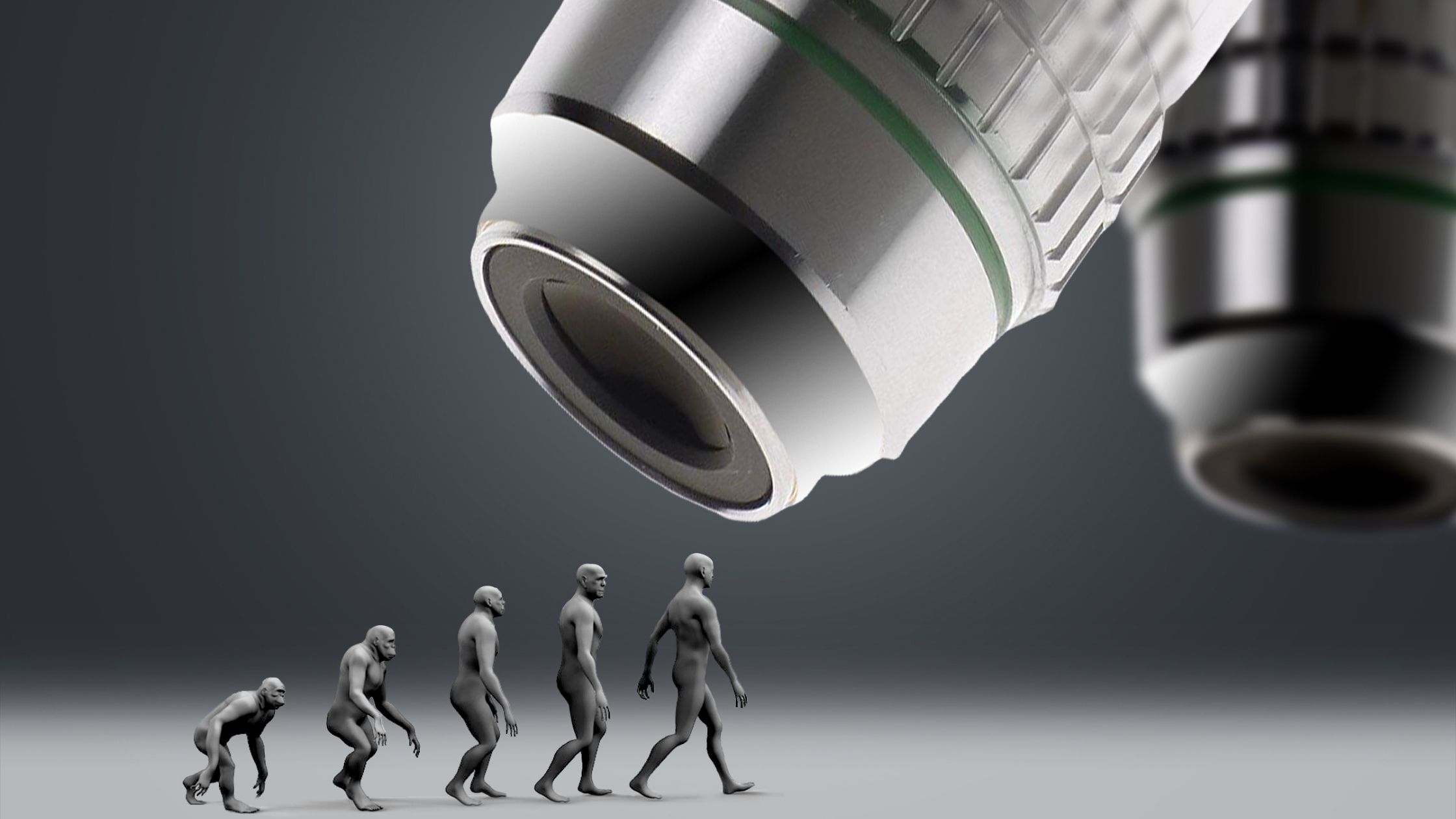Evolution Of The Human Diet – Loren Cordain’s Football Field Analogy
To many people, paleo, keto, and even intermittent fasting are just fad diets of the moment that will be replaced by the next big thing in a year or two. Although these labels are relatively new in the mainstream, the foundation of these diet approaches and the science behind them is not.
Collectively paleo, keto, and intermittent fasting make up the pre-agricultural human diet that we evolved with for millions of years. Our ancestors did not consume grains, dairy, legumes, soy, or other agriculturally based crops.
They did not eat 3-5 meals a day, and they developed an internal cleansing process, called autophagy, that purges damaged cells, toxins and other garbage from our bodies during extended periods between meals.
They consumed more than ten times as much fat as we do currently, primarily from animal sources, and may have been more or less active than most people of today.
Evolution Of The Human Diet – The Football Field Analogy

As a professor at Colorado State University, Dr. Loren Cordain, along with his collaborators Dr. Boyd Eaton and Dr. Staffon Lindeberg, developed the Paleo Diet.
As seen in the documentary The Perfect Human Diet, Dr. Cordain often uses a football field analogy to help demonstrate how abruptly the human diet has changed in recent years and how far out of alignment it is from what we are genetically programmed to eat.
The human diet football field analogy varies slightly depending on which events are highlighted over time, but generally goes as follows:
The 0-Yard Line
Just as you are stepping onto the field, this line represents 2 million years ago and the approximate initial appearance of one of the first members of the human genus, Homo erectus. Anatomically, H. erectus was very similar to us from the neck down.
The 10-Yard Line
This line represents 1.7 – 1.8 million years ago. A discovery in Dmanisi, Georgia (Europe), confirms that H. erectus had left Africa and crossed into Europe. Their existence at or above 40 degrees North Latitude provides supporting evidence that they utilized animal protein as plant material would not have been available all year-round.
At Approximately 17.5 Yards
1.65 million years ago. H. erectus is present in Zhoukoudian, a cave system in Beijing, China (Asia).
Cross the 20, 30, 40- and 50-Yard Lines
Begin down the other half of the field and a little over a million years later.
The Opposing End 25-Yard Line
Now three quarters of the way across the field, this line represents approximately 500,000 years ago and the initial appearance of Homo heidelbergensis, another extinct relative of modern humans (Homo sapiens). Our knowledge of H. heidelbergensis stems primarily from a discovery site in Boxgrove, England.
The exceptional strength of the bone fossils collected from the site are indicative of cold adaptation. Present at the site were hundreds of stone tools, and the remains of several now extinct species of rhinoceros, bears, and voles. Evidence collected from the animal remains confirm that they were butchered, but whether or not they were hunted or scavenged was not definitive.
The 20-Yard Line
A discovery of wooden throwing spears in Schöningen, Germany carbon dated to 400,000 years ago, represent the oldest complete hunting tools ever found. More than 10,000 animal bones, predominantly of horse, red deer, and European bison, were also present at the site. Several cut marks made by stone tools were observed on the animal bones.
With 12 Yards Left to Go
This point on the field represents approximately 230,000 years ago and the arrival of Neanderthals (Homo neanderthalensis). This extinct human relative was also determined to be heavily dependent on animal-based food, and possessed a larger brain and a greater behavioral sophistication than earlier representatives of the Homo genus.
A commonly supported theory among scientists is that a high consumption of omega-3 fatty acids contributed to the observed increase in brain development.
With Only 8.5 Yards Remaining – First & Goal
Represents approximately 192,000 years ago and the existence of the anatomically modern human (Homo sapiens) in Africa.
At 2.5 Yards
45,000 years ago, anatomically modern humans entered Europe. Full capacity for speech is noted, and increased sophistication in tool making, art, musical instruments, and other behaviors such as burying of their dead. Cave paintings from this period depicting humans hunting animals have been discovered in France.
Half a Yard Left
The onset of the first Agricultural Revolution (approximately 12,000 years ago) also known as the Neolithic Revolution. Prior to this point, the consumption of milk (aside from nursing infants) or grains was extremely rare, and refined sugars, grains, dairy and processed oils begin to occupy a large proportion of human diet.
At 0.01 Yards
Represents the 17th – 19th century (100-300 years ago). An unprecedented increase in agricultural production in Britain known as the British Agricultural Revolution.
At 0.001 Yards
This sliver of space represents approximately 60-90 years ago, the Third Agricultural Revolution, and the transition between what our grandparent ate, and the food we consume today.
Processed foods are beginning to dominate the human diet at this point, taking us completely off-base from what we had been adapted to eat during the previous 2 million years of development. Health issues relating to this drastically adjusted diet become rampant.
For the entire length of a football field, representing 2 million years of development, our current way of eating occupies less than the width of a pencil.
The Human Diet – What Changed?

Our knowledge of the human diet is extensive. More than 15,000 scientific papers, and an innumerable number of books have been published on the topic of primitive nutrition, and on the detrimental effects of our post agricultural diets.
This is not an attack on farmers, or the agricultural industry. The First Agricultural Revolution began as a means of survival. Much of the world’s mega fauna (large or giant animals) were lost during the last ice age and as a result of overharvesting, and humans were in need of food.
Our increased use and dependence on more plant-based foods in more recent years however, is less about need, and more about money and addiction. Agriculture in the US is a huge industry. Larger than big pharma and the NRA combined, and with even more influence. Similar to the tobacco industry, the products they are pushing are addictive.
The agricultural industry has massive influence in government and is responsible for creating our dietary guidelines. The US. Department of Agriculture’s (USDA) food pyramid, aka “the feed lot diet”, is crammed into school curriculums, and every government food program imaginable, despite the fact that the science overwhelmingly advises us against this way of eating.
Products made of grains and/or many other agricultural crops contain exorphins, which are morphine- like substances that are highly addictive. These are what makes dieting so difficult, and why people have such difficulty with overeating.
These foods have also been linked to increased risk of cancer, diabetes, obesity, inflammation, heart disease, mineral deficiencies, mood disorders, learning disabilities, Attention Deficit Disorder, Autism, Asperger’s disorder, anxiety disorders, immune and autoimmune diseases and countless other conditions.
Once these conditions began to emerge however, government agencies, and numerous government funded health organizations were quick to point the finger at cholesterol and dietary fats as the scapegoat. Once enough fear and confusion were created, these organizations then profited by producing and selling vegetable-based, artificial, and hydrogenated fats. Meanwhile, these conditions continue to increase rapidly.
Are you familiar with Dr. Loren Cordain’s research? Have you found this information interesting or helpful? Please consider sharing your thoughts and experience by commenting below in order to help others living a fit keto lifestyle.
Thank you for visiting LiveFitKeto.com. Check back often for new content or subscribe to our newsletter to receive updates on new articles, and if you have found this information helpful, please don’t hesitate to share.







